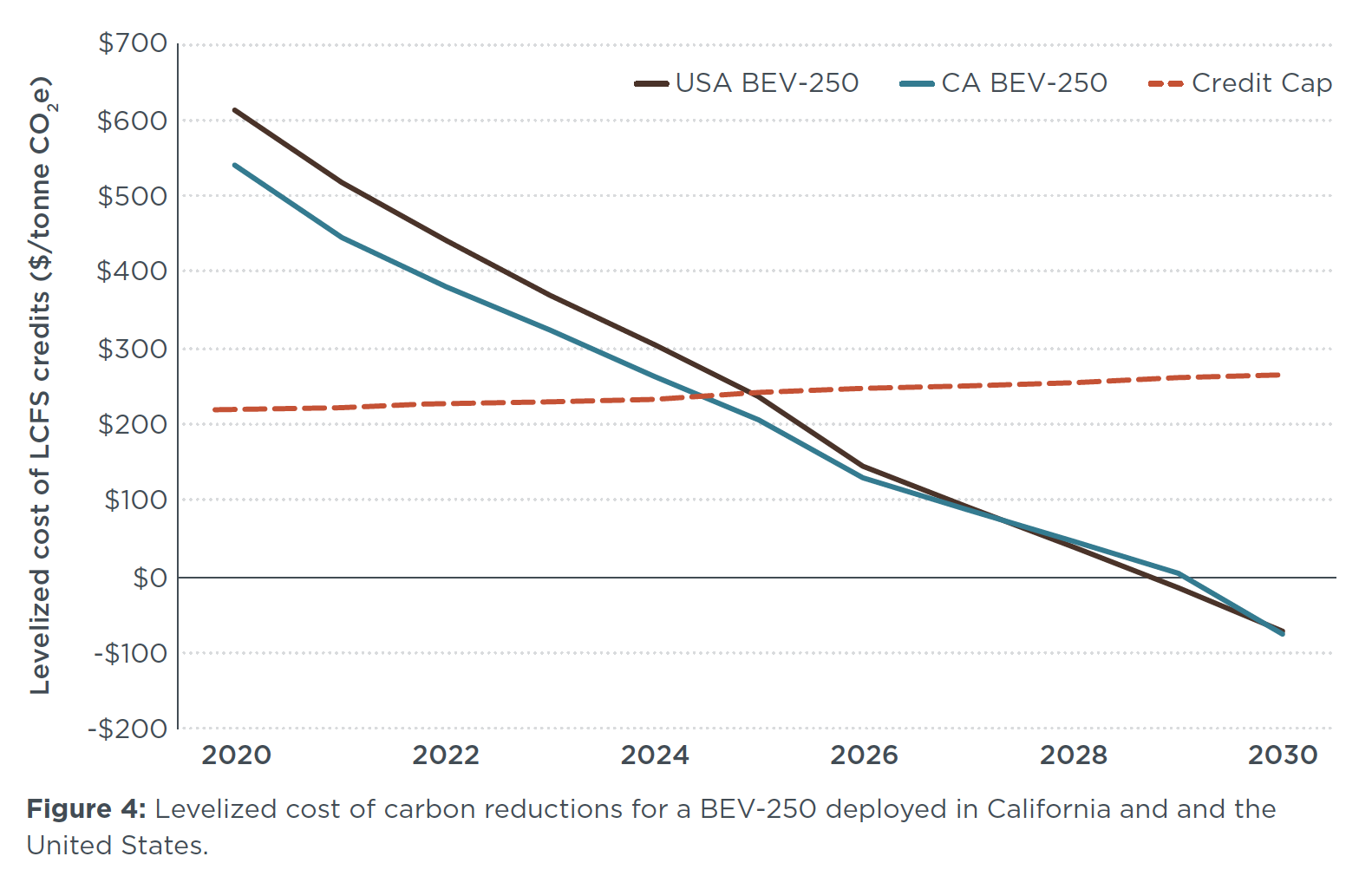Potential low carbon fuel supply to the Pacific Coast region of North America
Working Paper
Assessing the potential for low-carbon fuel standards as a mode of electric vehicle support
Low-carbon fuel standards (LCFS), which regulate the carbon intensity of fuels supplied to transportation, can provide long-term, durable funding for EV infrastructure and EV purchasing incentives as other policies such as rebates expire or are phased-down. This study assesses the role that a national LCFS program can play in accelerating the rate of light-duty passenger EV and charging infrastructure deployment.
Here we evaluate the credit generation and carbon savings from using electricity for transport within the California LCFS and a prospective national LCFS context, assessing the cost of compliance and revenue generation EVs. We also assess the cost-effectiveness of charging infrastructure investments as an LCFS compliance strategy for obligated parties.
We find that electric vehicles will become one of the most cost-effective ways of decarbonizing the transport fuels mix by mid-decade. We estimate that by 2025, the cost of deploying EVs will be cheaper than advanced biofuels and cost-competitive with first-generation biofuels within California’s LCFS. By 2030, we estimate that the levelized cost of carbon reductions from electric vehicles will approach zero relative to conventional ICE vehicles. The sale of LCFS credits from EV charging can be used to generate a regular funding stream for EV rebates and infrastructure; this creates a virtuous cycle, in which higher EV uptake would facilitate greater aggregate revenue generation to accelerate EV deployment.
This study estimates that charging infrastructure can supply LCFS credits cost competitively for obligated parties, depending on charger utilization rates. We find that the cost of LCFS compliance from Level 2 chargers falls below the current LCFS credit price at four or more hours of daily use. California’s introduction of infrastructure capacity credits for DC fast chargers help to make those chargers cost-competitive with biofuels above two hours of daily use. We find that infrastructure capacity credits can be a powerful policy lever to improve the cost proposition of fast chargers at low or uncertain utilization rates. Including infrastructure capacity credits in a national LCFS could help to accelerate the deployment of the charging infrastructure necessary to sustain an emerging national EV fleet.
